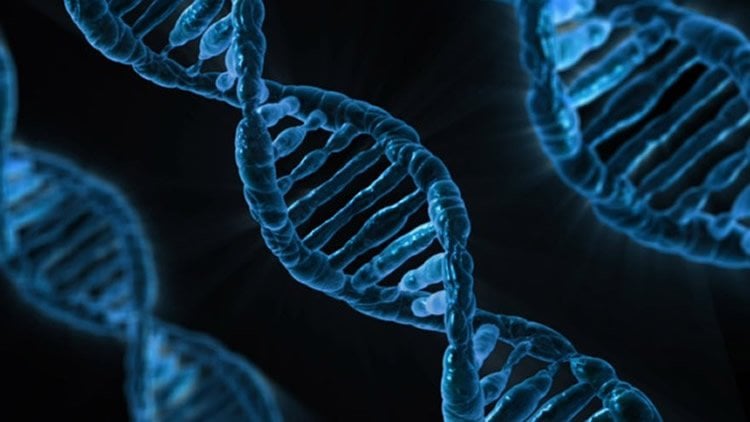Summary: Researchers report children with any form of the e4 gene showed differences in brain development, specifically in areas often associated with Alzheimer’s disease.
Source: AAN.
A gene associated with Alzheimer’s disease and recovery after brain injury may show its effects on the brain and thinking skills as early as childhood, according to a study published in the July 13, 2016, online issue of Neurology.
Prior studies showed that people with the epsilon(ε)4 variant of the apolipoprotein-E gene are more likely to develop Alzheimer’s disease than people with the other two variants of the gene, ε2 and ε3. “Studying these genes in young children may ultimately give us early indications of who may be at risk for dementia in the future and possibly even help us develop ways to prevent the disease from occurring or to delay the start of the disease,” said study author Linda Chang, MD, of the University of Hawaii in Honolulu and a Fellow of the American Academy of Neurology.
For the study, 1,187 children ages three to 20 years had genetic tests and brain scans and took tests of thinking and memory skills. The children had no brain disorders or other problems that would affect their brain development, such as prenatal drug exposure. Each person receives one copy of the gene (ε2, ε3 or ε4) from each parent, so there are six possible gene variants: ε2ε2, ε3ε3, ε4ε4, ε2ε3, ε2ε4 and ε3ε4.
The study found that children with any form of the ε4 gene had differences in their brain development compared to children with ε2 and ε3 forms of the gene. The differences were seen in areas of the brain that are often affected by Alzheimer’s disease.
In children with the ε2ε4 genotype, the size of the hippocampus, a brain region that plays a role in memory, was approximately 5 percent smaller than the hippocampi in the children with the most common genotype (ε3ε3). Children younger than 8 and with the ε4ε4 genotype typically had lower measures on a brain scan that shows the structural integrity of the hippocampus.

“These findings mirror the smaller volumes and steeper decline of the hippocampus volume in the elderly who have the ε4 gene,” Chang said.
In addition, some of the children with ε4ε4 or ε4ε2 genotype also had lower scores on some of the tests of memory and thinking skills. Specifically, the youngest ε4ε4 children had up to 50 percent lower scores on tests of executive function and working memory, while some of the youngest ε2ε4 children had up to 50 percent lower scores on tests of attention. However, children older than 8 with these two genotypes had similar and normal test scores compared to the other children.
Limitations of the study include that it was cross-sectional, meaning that the information is from one point in time for each child, and that some of the rarer gene variants, such as ε4ε4 and ε2ε4, and age groups did not include many children.
Funding: The study was supported by the National Institutes of Health, including the National Institute on Drug Abuse and the Eunice Kennedy Shriver National Institute on Child Health and Human Development.
Source: AAN
Image Source: This NeuroscienceNews.com image is in the public domain.
Original Research: Abstract for “Gray matter maturation and cognition in children with different APOE ε genotypes” by Linda Chang, MD, Vanessa Douet, PhD, Cinnamon Bloss, PhD, Kristin Lee, MS, Alexandra Pritchett, BA, Terry L. Jernigan, PhD, Natacha Akshoomoff, PhD, Sarah S. Murray, PhD, Jean Frazier, MD, David N. Kennedy, PhD, David G. Amaral, MD, Jeffrey Gruen, MD, Walter E. Kaufmann, MD, B.J. Casey, PhD, Elizabeth Sowell, PhD, Thomas Ernst, PhD; For the Pediatric Imaging, Neurocognition, and Genetics (PING) Study Consortium in Neurology. Published online July 13 2016 doi:10.1212/WNL.0000000000002939
[cbtabs][cbtab title=”MLA”]AAN. “Alzheimer’s Gene May Show Effects on Brain Starting in Childhood.” NeuroscienceNews. NeuroscienceNews, 14 July 2016.
<https://neurosciencenews.com/childhood-genetics-alzheimers-4686/>.[/cbtab][cbtab title=”APA”]AAN. (2016, July 14). Alzheimer’s Gene May Show Effects on Brain Starting in Childhood. NeuroscienceNews. Retrieved July 14, 2016 from https://neurosciencenews.com/childhood-genetics-alzheimers-4686/[/cbtab][cbtab title=”Chicago”]AAN. “Alzheimer’s Gene May Show Effects on Brain Starting in Childhood.” https://neurosciencenews.com/childhood-genetics-alzheimers-4686/ (accessed July 14, 2016).[/cbtab][/cbtabs]
Abstract
Gray matter maturation and cognition in children with different APOE ε genotypes
Objective: The aims of the current study were to determine whether children with the 6 different APOE ε genotypes show differences in gray matter maturation, particularly for those with ε4 and ε2 alleles, which are associated with poorer outcomes in many neurologic disorders.
Methods: A total of 1,187 healthy children (aged 3–20 years, 52.1% boys, 47.9% girls) with acceptable data from the cross-sectional Pediatric Imaging Neurocognition and Genetics Study were evaluated for the effects of 6 APOE ε genotypes on macroscopic and microscopic cortical and subcortical gray matter structures (measured with 3-tesla MRI and FreeSurfer for automated morphometry) and on cognition (NIH Toolbox).
Results: Among APOE ε4 carriers, age-related changes in brain structures and cognition varied depending on genotype, with the smallest hippocampi in ε2ε4 children, the lowest hippocampal fractional anisotropy in younger ε4ε4 children, the largest medial orbitofrontal cortical areas in ε3ε4 children, and age-dependent thinning of the entorhinal cortex in ε4ε4 children. Younger ε4ε4 children had the lowest scores on executive function and working memory, while younger ε2ε4 children performed worse on attention tasks. Larger parietal gyri in the younger ε2ε4 children, and thinner temporal and cingulate isthmus cortices or smaller hippocampi in the younger ε4ε4 children, predicted poorer performance on attention or working memory.
Conclusions: Our findings validated and extended prior smaller studies that showed altered brain development in APOE ε4–carrier children. The ε4ε4 and ε2ε4 genotypes may negatively influence brain development and brain aging at the extremes of age. Studying APOE ε polymorphisms in young children may provide the earliest indicators for individuals who might benefit from early interventions or preventive measures for future brain injuries and dementia.
“Multimodal and Site-Specific Plasticity of Amygdala Parvalbumin Interneurons after Fear Learning” by Elizabeth K. Lucas, Anita M. Jegarl, Hirofumi Morishita, and Roger L. Clem in Neuron. Published online July 14 2016 doi:10.1016/j.neuron.2016.06.032






